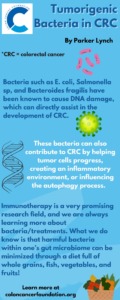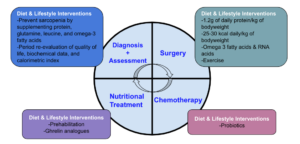Cancer incidence has been growing among younger adults—not just in the U.S., but globally. According to a recent analysis, the three decades between 1990 and 2019 saw almost an 80% increase in incidence of early-onset cancer. Following breast cancer, cancers of the digestive tract (stomach and colorectal) have seen a rise among young adults—in 2019, 37% of early-onset cancers diagnosed across the world were in the colon and rectum.
These trends are also reflected in the U.S. population. Here’s a startling prediction: by the year 2040, colorectal cancer (CRC) is estimated to be the second-leading cancer in the 20-49 age group and the top cause of cancer-related death in that age group.
The Need to Raise Awareness Among Providers
What is frustrating for the early-age onset CRC (EAO-CRC) community is that young individuals are not your typical candidate for developing colon cancer, which means their symptoms are either dismissed or attributed to some other gastrointestinal issue. According to cancer epidemiologist Yin Cao, 50% of EAO-CRC cases are among those under 45 years of age. Current guidelines recommend that someone with an average risk for CRC should start screening at age 45, so anyone younger may not get screened despite their symptoms.
An average-risk person is someone who does not have a known family history of CRC or a known genetic condition that’d increase their risk for developing CRC.
As a result, diagnosis is delayed, which raises the risk of an advanced-stage disease that may be harder to treat. One such study among nearly 1,200 EAO-CRC patients found that 71% were diagnosed at an advanced stage (stage III or IV).
*Information on the various stages of CRC can be found here.
What’s Leading to the Rise in EAO-CRC?
While there are a lot of guesses, researchers and clinicians are not quite sure. There are talks about a birth cohort effect, which is a term that describes the unique experiences or exposures faced by a group of individuals based on their year of birth. For example, Americans born prior to 1945 have been found to have a lower risk of being obese.
Going back to CRC, medical oncologist Christopher Lieu told ScienceNews that those in their 40s today are at a greater risk of developing CRC than those who turned 40 a decade ago (so now in their 50s). Several different risk factors are being investigated in those who develop EAO-CRC:
- Obesity
- Antibiotic exposure
- Changes in the gut microbiome (meaning the microbes that live in our gastrointestinal tract)
- Dietary habits
- Environmental exposures
However, there’s no definitive answer for the cause. The best preventive efforts include being physically active, managing your body weight, reducing the intake of processed food and integrating fresh fruits and vegetables in your diet.
What Do We Know?
What is definitely known are the telltale symptoms: pain in your abdomen, abnormal bowel movements (unexplained diarrhea or constipation), blood in your stools/rectal bleeding, unexplained weight loss, weakness. It is important to pay attention to these symptoms, which are often misdiagnosed as inflammatory bowel disease or hemorrhoids, especially in young adults. Any two of these signs could indicate a serious problem with your gastrointestinal tract—potentially, cancer.












 The multiethnic cohort study included 79,952 men and 93,475 women. Three plant-based diet scores were investigated to determine the incidence of invasive CRC:
The multiethnic cohort study included 79,952 men and 93,475 women. Three plant-based diet scores were investigated to determine the incidence of invasive CRC: